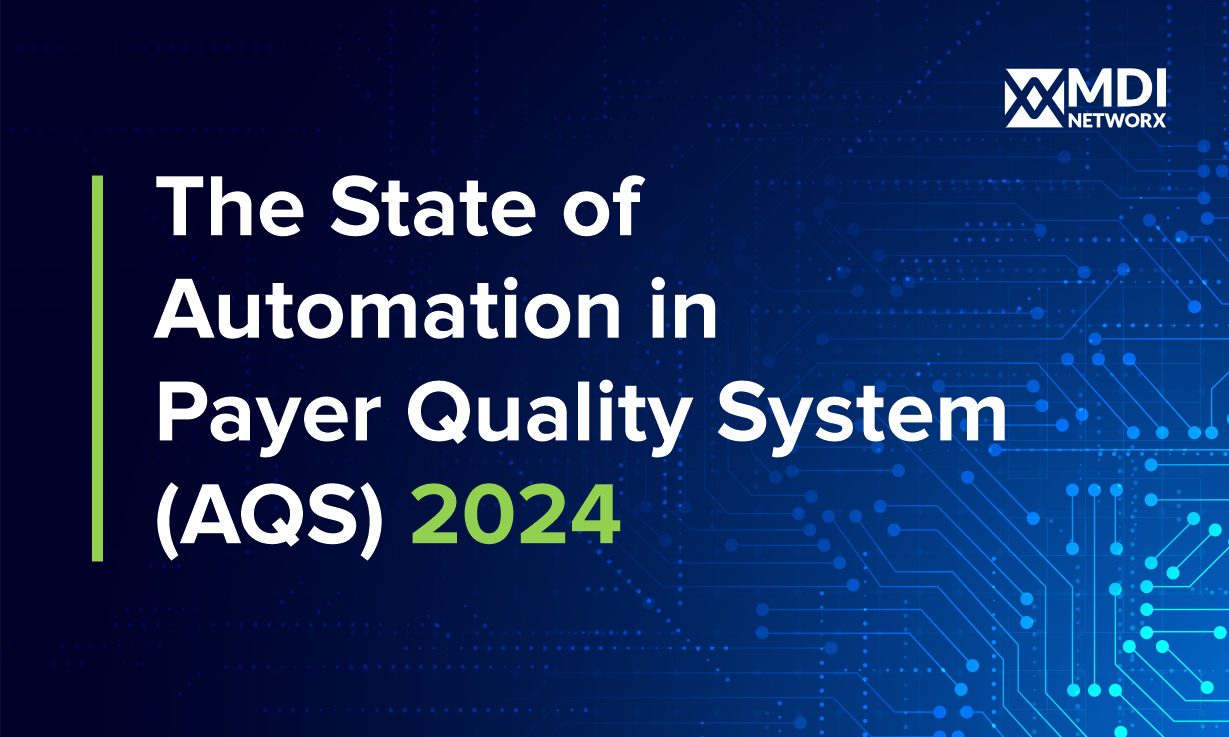Healthcare workflows in payer organizations will directly impact the quality and quantity of the work being done. With the rise in operational complexity across many healthcare payer environments, overcoming workflow management challenges is not a simple task. An inefficient claims processing workflow results in considerable waste. With strict industry regulations such as HIPAA, outdated technology for documentation, and resistance to change by providers and staff, it is best to tackle operational workflow management one area at a time.
When workflows are fine-tuned, common bottlenecks that hamper the payer operation workflow are reduced. Implementing efficient operation workflow practices by healthcare payers can contribute to controlled costs and errors, reduce duplicate effort, and faster processing time, all while improving member and provider experience.
Building a robust healthcare system requires optimizing healthcare workflows. Here, we'll discuss some key practices that can help identify the root cause and find solutions for operational impediments like redundant work, workflow inefficiencies, and bottlenecks.
Automate Workflows
One of the key ways to improve a payer's operational efficiency is workflow automation. Automation can bring numerous benefits to payer organizations, including greater workforce efficiency, lower demand for manual activities, faster service, and often higher productivity. When we say automation, we're talking about using technology to increase efficiency and scale existing processes and workforce. Automating processes can potentially eliminate bottlenecks that are attributed to the manual assignment of work using spreadsheets and the consolidation of the spreadsheets at the end of the day. Automated systems, such as integration with a core processing platform for work details, status, etc., and auto-assignment of work to associates, can play a massive role in claims processing workflow optimization and efficiency.
Say Goodbye to Paper Documentation
Outdated and labour-intensive paper-based processes can be a major drain on productivity as they don't facilitate streamlined workflows in healthcare entities. While payer organizations have taken a step towards automation and electronic record management, reliance on paper documentation for many manual administrative & routine tasks still stays as one of their most significant pain points.
Make Use of AI-ML Platforms
Today, the benefits of utilizing Artificial Intelligence (AI) and Machine Learning (ML) based platforms are widely recognized. An increasing number of payer organizations have started to adopt these in efforts to automate and improve their workflow practices for greater efficiency.
AI & ML for automation helps increase data processing speed, accuracy and provides a wider range of processing insights and data trends. It is safe to say that AI and ML have transitioned from industry buzzwords to business assets.
Find and Eliminate Workflow Bottlenecks
A hampered workflow can be slowed by certain constraints, creating a bottleneck. The reason behind a jammed-up workflow could be manual processes, untrained staff or inefficient audit and correction mechanism due to which the work cannot move as quickly as required and stall the process.
There are simple ways to address and fix these problems, reducing common bottlenecks that hamper the operational workflow. Effective operations workflow management like automating manual tasks, cross training of staff, optimizing processes, and more will allow these bottlenecks to be eased.
Adopt Real-Time Processing
The traditional batch processing system in workflow management can be another reason for bottlenecks, as it adds unwarranted operations that hamper the efficiency of a healthcare management system. Since batch processing allows the building up of a certain amount of work and then process it all at one time, it affects the productivity and turnaround time of workflow operations. When things are pushed off, they are more likely to induce delays or be processed unsatisfactorily. Adopting Just-In-Time (JIT) or Real-Time Processing may look tricky and more work, but it isn't so. It involves completing all your tasks as soon as they come in. Real-Time processing does not allow the work to build up as by enabling you to quickly switch between different tasks at any moment, thus enhancing the overall productivity and timely completion of the work.
From AI/ML-enabled performance and resource management system, InsightPRO and OCR & data entry tool, Golem to our workflow and document management system, DocGem; MDI NetworX offers a wide range of products to help optimize and enhance healthcare payer operation workflows.
If you're curious about how MDI NetworX can help healthcare payers optimize their workflow processes or want to learn more, check out – our website https://www.mdinetworx.com/ for more details or talk to one of our solution expert https://www.mdinetworx.com/contact-us




